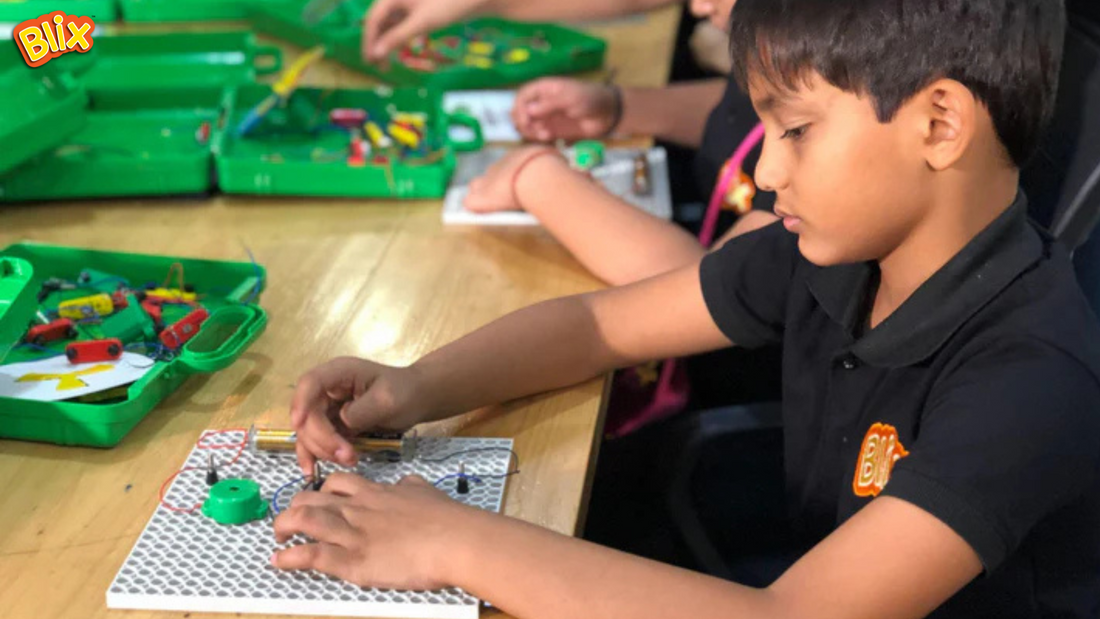
How STEM Toys Can Enhance Critical Thinking Skills
Share

Did you know the American Academy of Pediatrics have distinctly stated that media should be restricted to kids aged below 2?
Why are we talking about this? Because we want kids to play. Gadgets are here to dominate children's attention. But toys have their own set of benefits. Especially STEM toys. If used properly, these toys can develop early critical thinking skills in children. Let's explore how:
Why are educational toys important?
It's important to understand that kids learn quickly in their initial years, that is between 2 to 7. And that's why giving them the right toys matters much.
When it comes to educational toys, these are designed to promote learning through play. Unlike passive screen time, these toys actively engage children. It makes them think, experiment, and discover - all at once.
Often search for top educational toys because these toys come with a blend of fun and learning. Even though the concepts are complex, the toys are quite enjoyable. For example, STEM toys.
STEM education is best for fundamentals. No matter whether you want to start with technology, engineering, mathematics, or science - there's a toy available for everything.
How STEM Toys Enhance Critical Thinking?
Now it's time to get in the lines. Children develop critical thinking skills the day they utter the first word. And later this skill is developed through interaction with people nearby and toys. If they are engaged with STEM toys, kids develop:
1. Problem-Solving Skills:
STEM toys challenge children to think critically and solve problems. Whether building a structure with a construction set or programming a robot using STEM robotics kits, children have to use logical reasoning and analytical skills to achieve their goals.
In short, the whole process of trial and error helps them understand failures are a part of learning. It builds perseverance.
2. Creativity and Innovation:
Next and most important - DIY educational toys allow children to design and create their own projects. With this freedom, kids learn to innovate. They start thinking out of the box.
For example, when children are tasked with building something from scratch (maybe a robot), they learn to approach problems from different angles. They build unique solutions themselves which even you won't be aware of.
3. Logical Thinking:
When it comes to STEM education toys, kids here have to follow specific sequences and instructions. For example, building a robot with a STEM robotics kit is all about understanding and assembling various parts in a particular order.
This practice develops logical thinking. And even organizational skills which are important for the journey ahead.
4. Hands-On Learning:
Parents often struggle with finding ways to help kids learn complex concepts. And here's where STEM toys come to the rescue. Hands-on learning happens with these toys.
In fact, Educational STEM toys provide tactile and interactive experiences. With this, kids quickly grasp abstract ideas. If they are able to manipulate physical objects, they can see the direct impact of their actions.
STEM Toys Vs Mobile Screen Learning: What's Better?
A quick shift happened recently - that screens took over traditional toys. It's not that technology doesn't come with any benefits. However excessive screen time often hinders the development of critical thinking skills. In fact, passive consumption of digital content does not provide the same cognitive stimulation as interactive play.
On the other hand, STEM toys help kids to think and innovate through motor skills. For example, if you go with any DIY educational toy kit by Blix, kids learn actively. The products are designed with the insights of psychologists and educational experts: that's why kids consume what's needed to be consumed.
